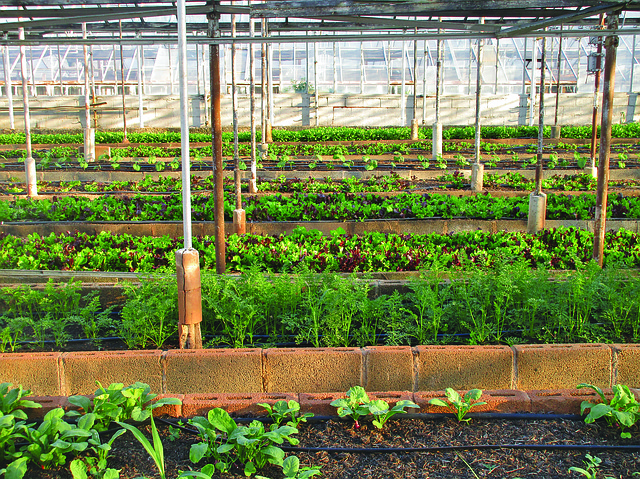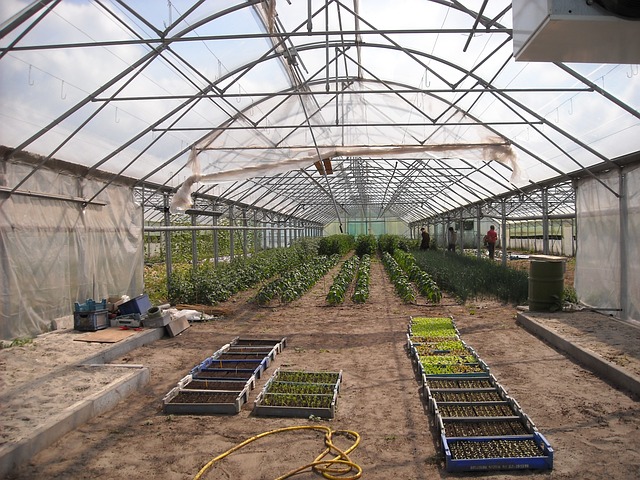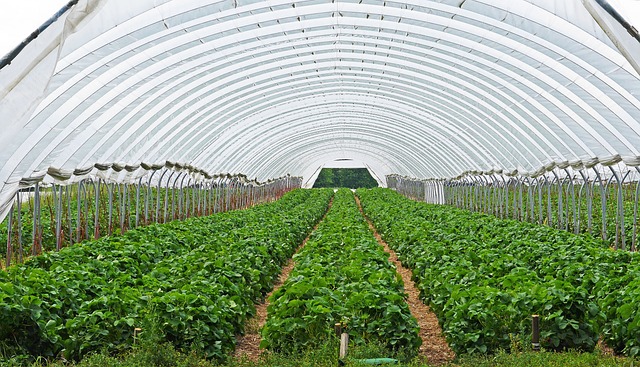When I started gardening, I often had to deal with unpredictable weather. Sometimes, a surprise frost could harm my delicate seedlings, or an unusually hot sun could endanger my favorite plants. Frustration led to inspiration, and I decided it was time to take control of my gardening destiny.
I’ll share my journey and provide you with a step-by-step guide on how to insulate a greenhouse effectively, ensuring your plants thrive no matter the season.
Here’s a quick guides on how to make a simple greenhouse using plastic sheeting:
- Plan the size and location.
- Build a frame using materials like PVC or wood.
- Cover the frame with UV-resistant plastic sheeting.
- Secure the plastic and create ventilation/access points.
- Set up the interior for plant growth.
- Regularly maintain the greenhouse by checking for damage and maintaining the ideal environment for plants.
What Are the Essential Materials and Tools?

To embark on your greenhouse project successfully, let’s first explore the essential materials and tools you’ll need to bring your vision to life.
Frame Materials (PVC, Wood, etc.)
PVC: PVC (polyvinyl chloride) pipes are lightweight, affordable, and easy to work with. They are a popular choice for greenhouse frames due to their durability and resistance to moisture.
Wood: Pressure-treated lumber or cedar is often used for greenhouse frames. It offers a natural look and can be a good choice if aesthetics are a consideration. However, wood may require more maintenance to prevent rot.
Metal Conduit: Galvanized steel or aluminum conduit pipes are sturdy options for framing. They are resistant to rust and provide excellent structural support.
Plastic Sheeting Options:
UV-Resistant Greenhouse Plastic: This type of plastic is designed to withstand prolonged sun exposure without deteriorating or becoming brittle. It comes in various thicknesses (e.g., 4 mil) and can be clear or diffused to control light diffusion.
Fasteners and Anchoring Materials:
Screws: These are commonly used to secure frame components together. Rust-resistant screws are recommended for outdoor use.
Nails: Nails can be used with wood frames but may require more maintenance as they can loosen over time.
Pipe Clamps: If you’re using PVC or metal conduit, pipe clamps are effective for securing plastic sheeting to the frame.
Anchoring Materials: Depending on your location, you may need stakes, sandbags, or weights to anchor the greenhouse to the ground and prevent it from tipping over in strong winds.
Necessary Tools (Saw, Drill, Measuring Tape, etc.):
Saw: A saw is essential for cutting frame materials to the desired lengths. A hacksaw or PVC pipe cutter is suitable for cutting PVC pipes, while a circular saw or miter saw works well for wood.
Drill: You’ll need a drill to make holes for screws or fasteners in the frame components.
Measuring Tape: Accurate measurements are crucial for ensuring the greenhouse’s proper dimensions and alignment.
Level: A level helps ensure that the frame is plumb and level, which is essential for stability.
Hammer: If you’re using nails, a hammer is necessary for driving them into wood.
Other Basic Tools: Depending on your specific design and materials, you may require additional tools like a staple gun, wrenches, or pliers.
How to Efficiently Plan a Greenhouse with Plastic Sheeting?
Efficiently planning your plastic sheeting greenhouse involves careful consideration of key factors such as location, size, layout, and materials.
Determining the Greenhouse Size:
- Consider the available space and your gardening needs when determining the size of the greenhouse.
- Think about the types and quantities of plants you want to grow and ensure the greenhouse dimensions accommodate them.
- Factor in space for pathways, shelving, and other interior features.
Choosing the Location:
- Select a location that receives ample sunlight throughout the day, preferably with southern exposure.
- Ensure the ground is level to simplify construction and ensure proper drainage.
- Avoid areas with excessive shade, as this can limit the greenhouse’s effectiveness.
Considering Sunlight Exposure and Level Ground:
Sunlight is crucial for plant growth, so choose a location that maximizes exposure. Consider nearby trees, buildings, and shading structures that may affect sunlight.
Additionally, level ground is essential for stability and proper water drainage. If the ground isn’t level, you may need to do some leveling or grading work before construction. Ensure water doesn’t pool around the greenhouse, as this can lead to issues like mold and rot.
What’s the Best Approach for Building the Frame of a Greenhouse?
When it comes to constructing a sturdy greenhouse frame, opting for the right materials and design is crucial.
Cutting and Preparing Frame Materials:
Measure and mark the frame materials (e.g., PVC pipes or wood) according to your greenhouse’s design and dimensions. Moreover, use a saw appropriate for your chosen material to make precise cuts. Ensure that cuts are straight and clean to ensure a snug fit during assembly.
However, if you’re using PVC pipes, consider using PVC fittings like elbow joints and connectors to create the desired frame shape. Dry-fit the components to ensure they align correctly.
Assembling the Frame:
Start assembling the frame by connecting the cut pieces together. Follow your greenhouse design plan to ensure accurate placement of each component.
For PVC frames, insert pipes into the fittings and secure them. For wood or metal frames, use appropriate fasteners like screws or bolts to join the pieces.
Moreover, check that the frame is square and level as you assemble it. Use a carpenter’s square and a level to ensure accuracy.
Ensuring Stability and Anchoring to the Ground:
To enhance stability, consider adding diagonal braces to the frame. These diagonal supports help prevent swaying or leaning, especially in windy conditions.
Moreover, anchor the greenhouse frame securely to the ground. Depending on your location and soil type, you can use stakes, concrete footings, sandbags, or other suitable anchoring methods.
In addition, ensure the frame is firmly anchored but still level. Proper anchoring is critical for the greenhouse’s long-term durability.
How to Properly Cover with Plastic Sheeting in a Greenhouse?
Achieving a proper and secure plastic sheeting cover greenhouse is pivotal for its success in maintaining an ideal environment for your plants.
Preparing the Plastic Sheeting:
- Unroll the UV-resistant greenhouse plastic sheeting on a clean and flat surface near your greenhouse frame.
- Ensure the plastic is clean and free of dust or debris, as this can affect light transmission.
- Trim the plastic sheeting to the appropriate size, allowing for some overlap on all sides of the greenhouse frame.
Draping the Plastic Over the Frame:
- Carefully drape the cut plastic sheeting over the frame, making sure it fully covers all sides of the greenhouse.
- Ensure that the plastic reaches the ground on all sides to prevent drafts and maintain a sealed environment.
- Be cautious when handling the plastic to avoid tears or punctures.
Securing the Plastic to the Frame:
- Start securing the plastic to the frame at the corners and work your way around. Use screws, nails, or pipe clamps to attach the plastic.
- Space the fasteners approximately 12-18 inches apart to ensure even tension on the plastic.
- Pull the plastic taut as you secure it to minimize wrinkles and create a smooth surface.
Trimming Excess Plastic:
- After securing the plastic, trim any excess along the edges of the greenhouse frame using a sharp utility knife or scissors.
- Make clean, straight cuts to ensure a neat appearance and prevent the plastic from flapping in the wind.
- Dispose of the trimmed plastic properly.
What’s the Key to Effective Maintenance in a Greenhouse?

Effective maintenance in a greenhouse hinges on a proactive approach encompassing regular checks, climate control, and pest management to nurture thriving plants year-round.
Regularly Checking for Tears or Damage:
Regular inspections of the plastic sheeting are crucial. Look for tears, holes, or loose fasteners that could compromise the greenhouse’s integrity. In addition, repair any damage promptly with greenhouse tape, patch kits, or by replacing the damaged plastic.
Ensuring Proper Ventilation and Temperature Control:
Continuously monitor temperature and humidity levels within the greenhouse, especially during extreme weather conditions. Moreover, adjust vents, doors, and fans as needed to maintain the desired climate. In addition, be prepared to provide supplemental heating or shading during temperature extremes.
Watering and Caring for Plants as Needed:
- Maintain a consistent watering schedule based on the needs of your plants. Greenhouse environments may require more frequent watering due to increased heat and humidity.
- Regularly inspect plants for signs of pests or diseases and take appropriate measures to control them.
- Fertilize plants according to a schedule suitable for the specific plant species and growth stage.
FAQ’s
What kind of plastic sheets do you use for a greenhouse?
Greenhouses typically use UV-resistant polyethylene plastic sheets or polyvinyl chloride (PVC) sheets.
How thick is greenhouse plastic sheeting?
Greenhouse plastic sheeting is usually available in thicknesses ranging from 4 to 10 mils (0.004 to 0.01 inches), with 6 mils being a common choice.
How do you attach plastic to a greenhouse?
Plastic is typically attached to a greenhouse frame using clips, channels, or specialized fastening systems designed for greenhouse covering materials.
How long will plastic sheeting last in the sun?
The lifespan of greenhouse plastic in direct sunlight can vary but is typically around 2 to 5 years, depending on the quality of the material and UV resistance.
Is PVC plastic good for a greenhouse?
PVC plastic can be used for a greenhouse frame, but it may not be the best choice due to its lower insulation properties compared to metal or wood.
How long does greenhouse plastic last?
Greenhouse plastic covering can last anywhere from 2 to 5 years, but this can vary based on factors like climate, maintenance, and the quality of the plastic.
What is the best material for a greenhouse?
Polycarbonate panels or double-layered polyethylene plastic are often considered among the best greenhouse covering materials, offering good insulation and durability. The choice depends on your specific needs and budget.
Conclusion
I’m filled with a sense of pride and accomplishment. Building this greenhouse with plastic sheeting has been a rewarding journey, and it offers me the perfect opportunity to extend my growing season while shielding my precious plants from the unpredictable elements. In this comprehensive guide, I’ve delved into the essential steps that brought this functional and efficient greenhouse to life.
The choice of frame materials, which I carefully considered, has proven to be the foundation of this project’s success. It provides the sturdy structure necessary to support the plastic sheeting and protect my plants.
Ventilation and access points, such as doors and vents, have become my lifelines in maintaining the ideal climate within this greenhouse. As I open the doors to let a refreshing breeze in or adjust the vents to control humidity levels, I’m reminded of how crucial these features are for the well-being of my plants. They allow me to create a nurturing environment in which my plants can truly thrive.

